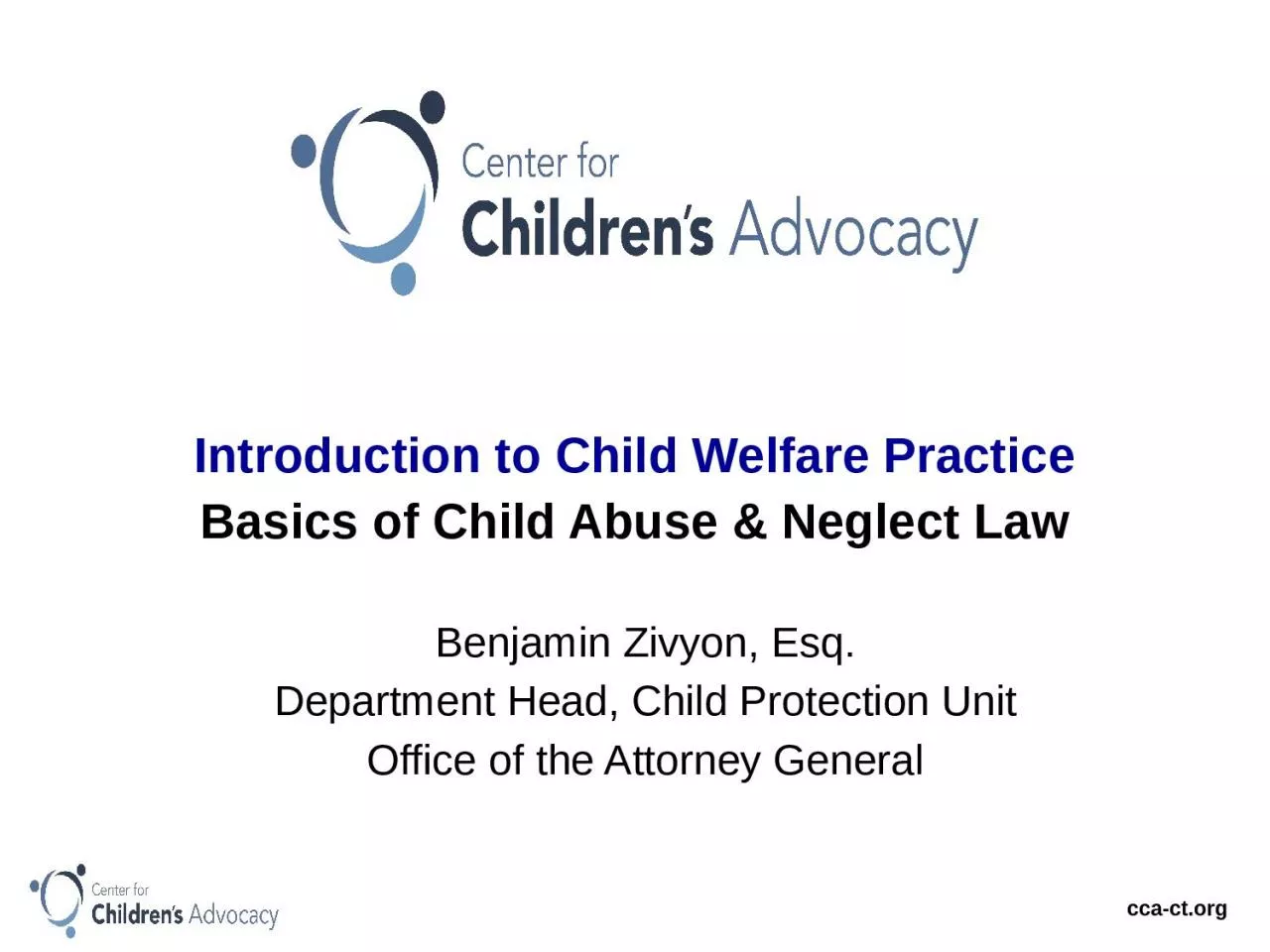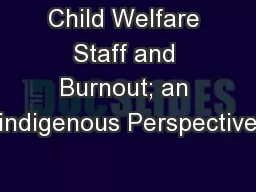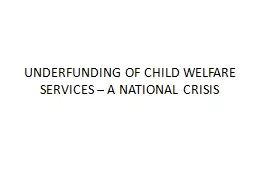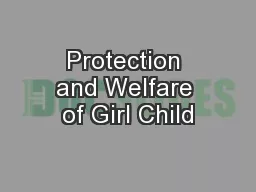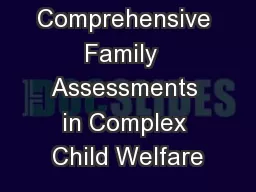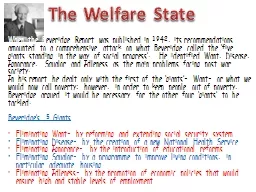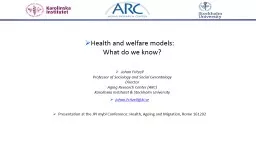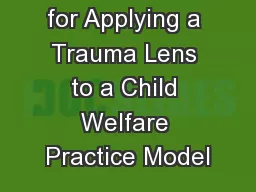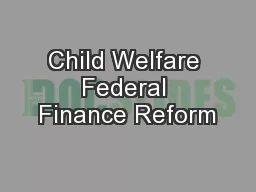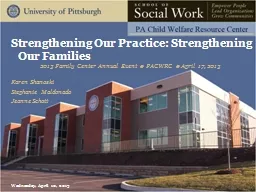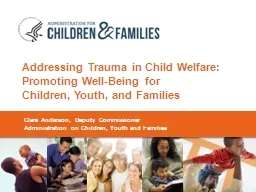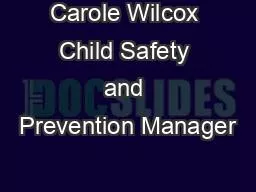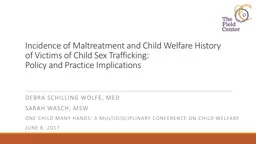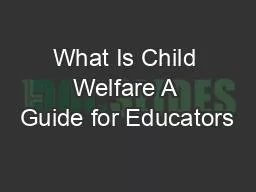PPT-Introduction to Child Welfare Practice
Author : cappi | Published Date : 2023-11-09
Basics of Child Abuse amp Neglect Law Benjamin Zivyon Esq Department Head Child Protection Unit Office of the Attorney General Overview Professions involved with
Presentation Embed Code
Download Presentation
Download Presentation The PPT/PDF document "Introduction to Child Welfare Practice" is the property of its rightful owner. Permission is granted to download and print the materials on this website for personal, non-commercial use only, and to display it on your personal computer provided you do not modify the materials and that you retain all copyright notices contained in the materials. By downloading content from our website, you accept the terms of this agreement.
Introduction to Child Welfare Practice: Transcript
Basics of Child Abuse amp Neglect Law Benjamin Zivyon Esq Department Head Child Protection Unit Office of the Attorney General Overview Professions involved with c hild welfare system. Chuck Johnson. President and CEO. National Council For Adoption. Thank You!. About NCFA. Mission. Passionately . committed to the belief that every child deserves to thrive in a nurturing, permanent family, NCFA’s mission is to meet the diverse needs of children, birthparents, adopted individuals, adoptive families, and all those touched by adoption through global advocacy, education, research, legislative action, and collaboration.. Presenter . Ume . Laila. Roshni Homes Trust Pakistan. INTRODUCTION. “The well-being of children served by the child welfare system is put at risk by the difficulties child welfare . organizations . CONSTITUTION – BILL OF RIGHTS. Section 28. . . Children.-(1) . Every child has the right- . (. b) . to family care or parental care, or to appropriate alternative care when removed from the family environment; . Introduction. India is home to the largest child population in the world. The girl child is the most vulnerable member of the Indian society. . The Constitution of India through the Fundamental Rights and Directive Principles protects the rights of children and directs the State to ensure that the children are protected from abuse, and are provided early childhood care and education. . Kathleen Coulborn Faller, Ph.D., A.C.S.W., D.C.S.W.. Marion Elizabeth Blue Professor of Children and Families . School of Social Work. Director, Family Assessment Clinic. University of Michigan. Federal Guidelines & Observations. When the B. everidge Report was published in 1942, its recommendations amounted to a comprehensive attack on what Beveridge called the ‘five giants standing in the way of social progress’. He identified Want, Disease, Ignorance, Squalor and Idleness as the main problems facing post war society.. What do we know?. Johan Fritzell. Professor of Sociology and Social Gerontology. Director. Aging Research Center (ARC). Karolinska. . Institutet. . & Stockholm University. johan.Fritzell@ki.se. Lisa Conradi, . Psy.D. . . Project Co-Director – ACYF and SAMHSA Grants. Chadwick Center for Children and Families . &. Annette Burleigh, ACSW, LCSW. Programs . Manager, Trauma-Informed . Care. Christine Calpin. Joan Smith. JooYeun Chang. Overview of Child Welfare Finance Reform. Overview of Child Welfare Finance Reform . Federal . child welfare finance . reform is a strategy to . achieve Casey Family Programs 2020 goal of safely . 2013 Family Center Annual Event . PACWRC April 17, 2013. Karen . Shanoski. Stephanie . Maldonado . Jeanne . Schott. Wednesday, April 10, 2013. Introduction. Learning Objectives. Agenda. Learning Objectives. Clare Anderson, Deputy Commissioner. Administration on Children, Youth and Families. Well-Being Has Multiple Domains, . including but not limited to . safety and permanency. 2. Adapted from Impact Youth Services, 2011; . MNDHS Child Safety and Permanency Division. Minnesota: One State’s Journey. March 6, 2014. Overview. Minnesota Context. Influence of Child Welfare Reform. Development process. Integration of Components. of Victims of Child Sex Trafficking:. Policy and Practice Implications. Debra schilling . wolfe. , MEd. Sarah . Wasch. , . MSW. One Child Many Hands: A Multidisciplinary Conference on Child Welfare. June 8, 2017. This material may be freely reproduced and distributed However when doing so please credit Child Welfare Information Gateway Available online at https//wwwchildwelfaregov/pubs/cw-educatorsUS Departmen
Download Document
Here is the link to download the presentation.
"Introduction to Child Welfare Practice"The content belongs to its owner. You may download and print it for personal use, without modification, and keep all copyright notices. By downloading, you agree to these terms.
Related Documents

